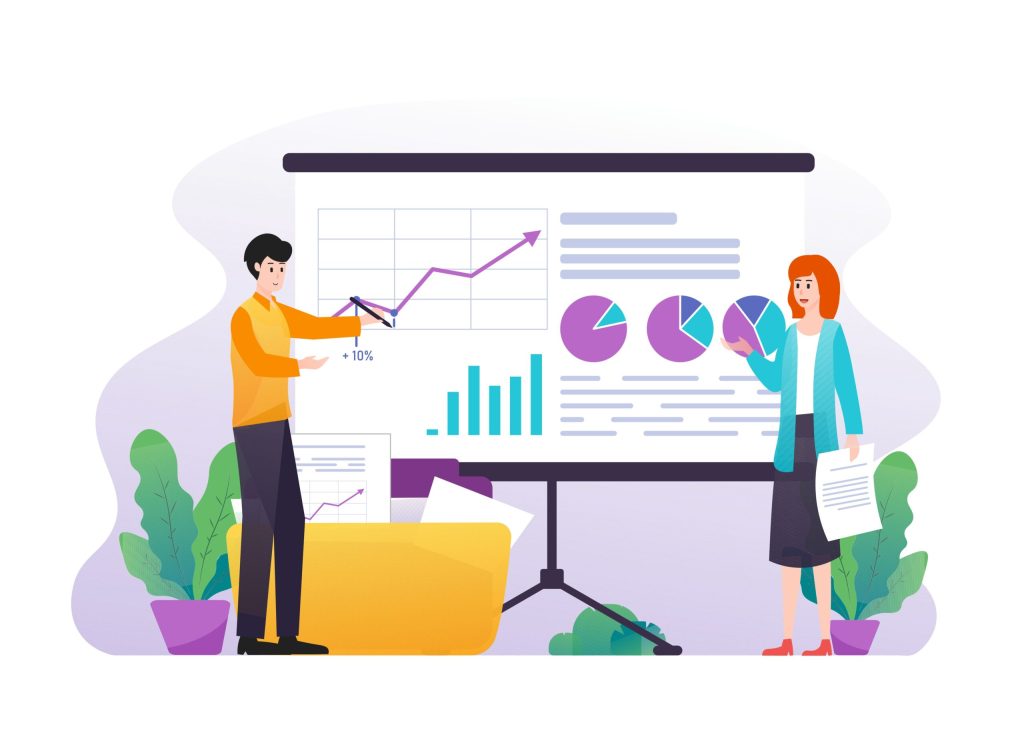Table of Contents
In today’s data-driven economy, companies are investing heavily in analytics—but not all are seeing the return they expected. So how can organizations go beyond flashy dashboards and actually start maximizing ROI on analytics projects?
At Engine Analytics, we’ve seen what works (and what doesn’t) when it comes to turning data into dollars. Whether you’re launching your first project or looking to improve performance, this guide shares real-world lessons to help you build analytics initiatives that truly pay off.
Why Maximizing ROI on Analytics Projects Really Matters
The promise of data analytics is huge: smarter decisions, better customer insights, and streamlined operations. But the reality? Many businesses struggle to translate analytics investments into measurable gains.
Maximizing ROI on analytics projects means aligning efforts with clear business goals, tracking meaningful outcomes, and ensuring the data tools you build are used consistently by decision-makers. It’s not just about collecting data—it’s about creating value.
Begin with the Business Problem, Not the Tool
Too often, companies buy analytics platforms before they know what problems they’re solving. That’s a fast path to poor adoption and wasted spend.
Here’s a better approach:
Identify your top business challenges. For example: Are you trying to reduce churn, optimize marketing spend, or improve customer satisfaction?
Quantify the potential value. How much could solving this issue save or earn?
Choose metrics that matter. Avoid vanity metrics and focus on KPIs linked to revenue or cost savings.
? Pro tip: At Engine Analytics, we help clients define business objectives before recommending tools. That alignment is key to maximizing ROI on analytics projects.
Get Stakeholders Involved from Day One
Even the most sophisticated analytics model won’t drive ROI if no one uses it. Getting early buy-in from stakeholders is essential.
Ways to engage stakeholders:
Collaborate during the planning stage.
Use wireframes and mockups to preview dashboards.
Highlight “what’s in it for them” with clear benefits.
Provide training and support.
Engaged users = consistent usage = measurable ROI.
Build Dashboards That Drive Real Decisions
Analytics is a means to an end. If your dashboards look great but no action comes from them, you’re not maximizing ROI on analytics projects.
How to drive decisions from data:
Build actionable dashboards that highlight key metrics and trends.
Include thresholds and alerts to signal when action is needed.
Pair dashboards with playbooks—guidelines for what to do when metrics shift.
Focus on Clean Data Over Big Data
One of the most common mistakes we see? Teams trying to use large datasets that are messy or incomplete. Clean, relevant data trumps volume every time.
Best practices for better data quality:
Set up data governance policies and define ownership.
Automate data cleaning tasks where possible.
Conduct regular audits to spot gaps or inconsistencies.
? Check out our post on Organizing and Cleaning Your Data to learn how data hygiene boosts ROI.
Tie KPIs Directly to Business Outcomes
You can’t optimize what you don’t measure—and you can’t measure ROI if your KPIs aren’t aligned with business goals.
Effective KPI alignment involves:
Understanding how each KPI impacts business outcomes.
Setting benchmarks and targets.
Reviewing and refining KPIs quarterly.
For example, if you’re building a sales dashboard, track metrics like lead-to-close ratio or average deal size—not just website visits.
Deliver Quick Wins to Build Momentum
Long-term projects are important, but delivering early wins keeps stakeholders invested.
Quick wins might include:
Automating a manual reporting task.
Visualizing a key sales trend.
Identifying a customer segment with high churn risk.
These small successes build credibility and encourage continued investment—both critical for maximizing ROI on analytics projects.
Design Analytics Solutions That Scale
Your analytics needs today will evolve. A short-term solution might work now but cause rework later.
Scalable solutions include:
Cloud-based data infrastructure.
Modular dashboard designs.
Integrations with CRMs and ERP systems.
Scalability isn’t just a technical consideration—it directly impacts ROI by reducing future costs.
Automate First—Then Focus on Optimization
Automation saves time, reduces errors, and ensures consistency—key ingredients for improving ROI.
Examples of automation:
Scheduled report distribution.
Real-time data syncing between platforms.
Automated anomaly detection.
Once automation is in place, you can shift focus to optimization—finding trends, outliers, and new opportunities.
Make Analytics Reviews a Habit
Analytics isn’t “set it and forget it.” To truly maximize ROI on analytics projects, you need regular reviews and course corrections.
Set a review rhythm:
Monthly reviews for fast-changing metrics.
Quarterly strategy alignment check-ins.
Annual ROI evaluations.
Track not just usage stats, but business impact: revenue growth, cost reductions, customer retention, etc.
Work with a Partner Who Understands ROI
Sometimes, internal teams don’t have the bandwidth or expertise to tackle analytics effectively. That’s where working with an analytics partner can transform your ROI.
A good partner should:
Understand your business inside and out.
Recommend the right tools for your stage.
Offer training and ongoing support.
? At Engine Analytics, we act as an extension of your team, helping you go from messy spreadsheets to decision-driving dashboards.
Real-World Example: Retail Company Saves $120K Annually
One of our clients, a mid-sized retailer, was manually managing inventory across 20 locations. By implementing an integrated analytics dashboard with real-time stock data, they reduced overstocking and understocking by 30%.
The result? An annual savings of over $120,000 and a better customer experience.
This is what maximizing ROI on analytics projects looks like in the real world.
Common Pitfalls to Avoid
Here are a few traps that can derail ROI:
Chasing shiny tools instead of solving problems.
Lack of executive sponsorship.
Overcomplicating dashboards with too many metrics.
Ignoring user feedback.
Avoid these, and you’re already ahead of the curve.
Recommended Tools for Boosting ROI
To help with maximizing ROI on analytics projects, consider:
Power BI or Looker for scalable dashboards.
Fivetran or Stitch for data integration.
dbt for data transformation workflows.
Amplitude for product analytics.
These tools, when used wisely, can speed up time-to-value and reduce manual effort.
According to a Forrester study on analytics ROI, companies that invest in governance, user adoption, and strategic alignment see significantly higher returns from their data initiatives.
Conclusion: Analytics Should Pay for Itself
At the end of the day, analytics isn’t about flashy charts—it’s about results. Whether that’s saving time, cutting costs, or boosting revenue, every project should drive measurable business value.
By focusing on real problems, aligning teams, and building with long-term ROI in mind, you can turn your analytics from a cost center into a profit engine.
? Ready to start maximizing ROI on analytics projects? Contact Engine Analytics today to see how we can help.
Here’s Some Interesting FAQs for You
What’s the best way to calculate ROI on an analytics project?
The best way to calculate ROI is to compare the total investment (including tools, labor, and time) with the value it generates. That value might come from revenue growth, time savings, reduced errors, or cost savings.
Formula: ROI = (Net Benefit / Total Cost) × 100
For example, if your analytics project helps save $50,000 and costs $20,000 to implement, your ROI would be 250%.
How long does it take to see ROI from analytics?
The timeline depends on the complexity of your project and the problem you’re solving. However, many businesses begin seeing clear benefits within 3 to 6 months—especially when the solution is tied to a well-defined, high-impact use case like sales optimization or operational efficiency.
Can small businesses benefit from analytics too?
Absolutely. In fact, small businesses often experience quicker wins because they can act faster and adapt more easily. Even simple dashboards or reports can reveal cost-saving opportunities, customer trends, and process improvements—helping them stay competitive without massive investment.
The best way to calculate ROI is to compare the total investment (including tools, labor, and time) with the value it generates. That value might come from revenue growth, time savings, reduced errors, or cost savings.
Formula: ROI = (Net Benefit / Total Cost) × 100
For example, if your analytics project helps save $50,000 and costs $20,000 to implement, your ROI would be 250%.
The timeline depends on the complexity of your project and the problem you’re solving. However, many businesses begin seeing clear benefits within 3 to 6 months—especially when the solution is tied to a well-defined, high-impact use case like sales optimization or operational efficiency.
Absolutely. In fact, small businesses often experience quicker wins because they can act faster and adapt more easily. Even simple dashboards or reports can reveal cost-saving opportunities, customer trends, and process improvements—helping them stay competitive without massive investment.










